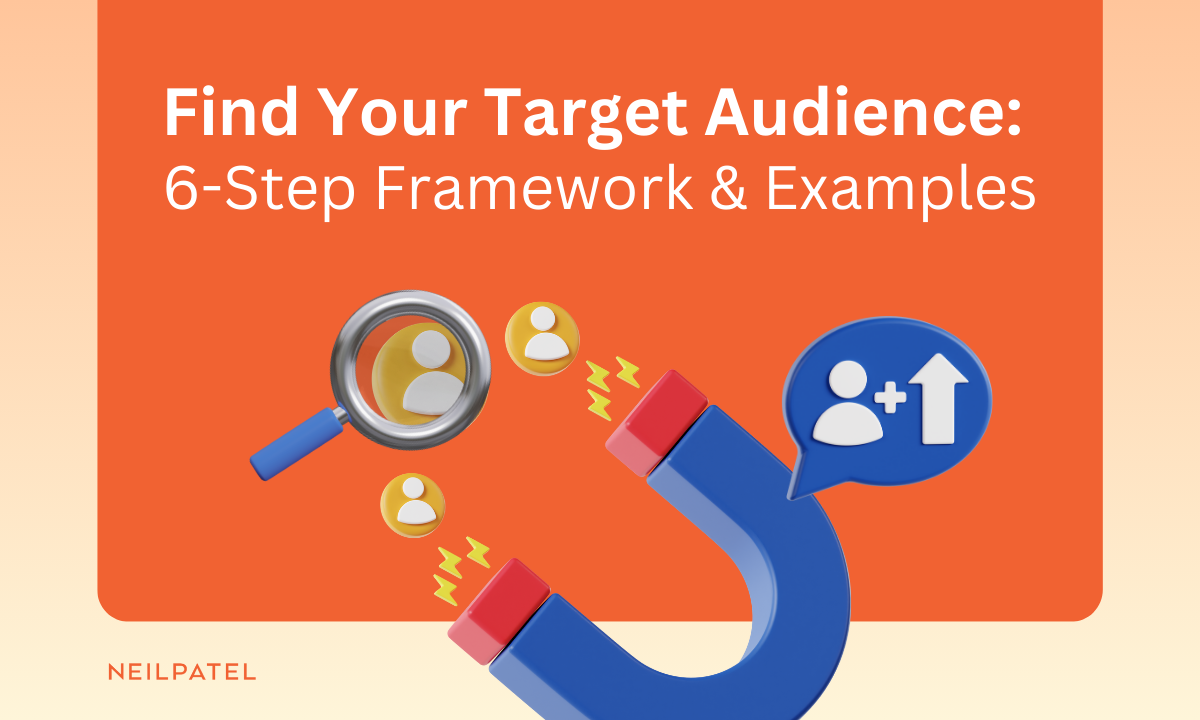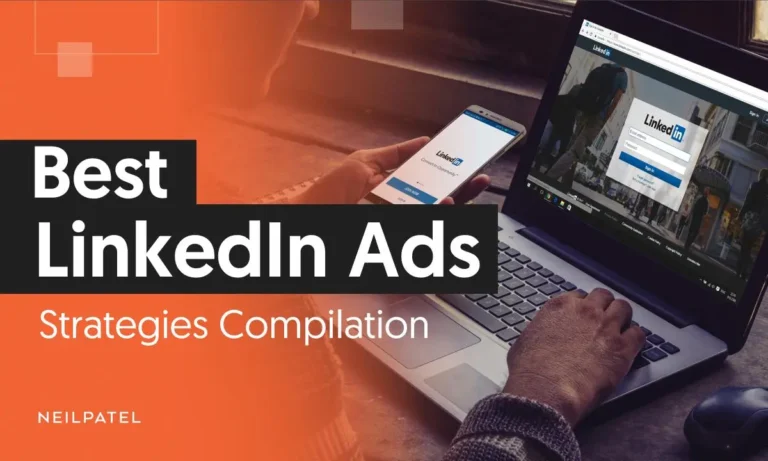Find Your Target Audience: 6-Step Framework & Examples
When I first started out in marketing, traffic was my number one priority.
I focused on boosting visitor numbers. Yet despite some impressive figures, I wasn’t able to match the revenue of big players like HubSpot.
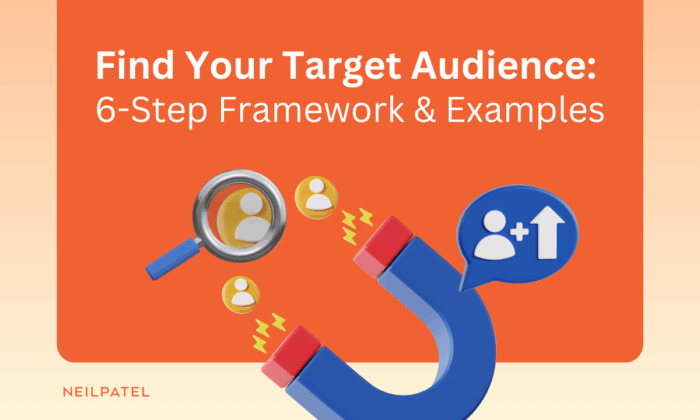
Not until I doubled down on understanding my target audience. When I stopped wasting money chasing the wrong people, everything fell into place.
I learned that defining your target audience is the first and most essential step towards success, especially if you’re just getting started.
Key Takeaways
- A target audience is a sub-section of a target market that a business tries to reach with a particular marketing or ad campaign.
- Identifying your target audience has multiple benefits. It helps you hone your messaging, pick best-fit channels, and improve marketing and ad ROI.
- Finding your target audience involves segmenting your target market, understanding segment pain points, identifying active channels, and A/B testing your marketing campaigns.
- To successfully reach your target audience, it’s important to adopt an omnichannel approach and refine your strategy with qualitative data (direct audience feedback).
The term “target audience” is sometimes confused with the following concepts:
- Target market: The larger group of potential consumers that a company caters to. A target market usually contains multiple target audiences.
- Customer persona: A fictional, generalized customer profile. It combines the most important characteristics of a target audience.
Let’s look at an example. Here’s a webinar ad from my company, Neil Patel India. My target audience for this campaign is SEO professionals and technically literate small business owners in the 25 to 45 age bracket who live in India.
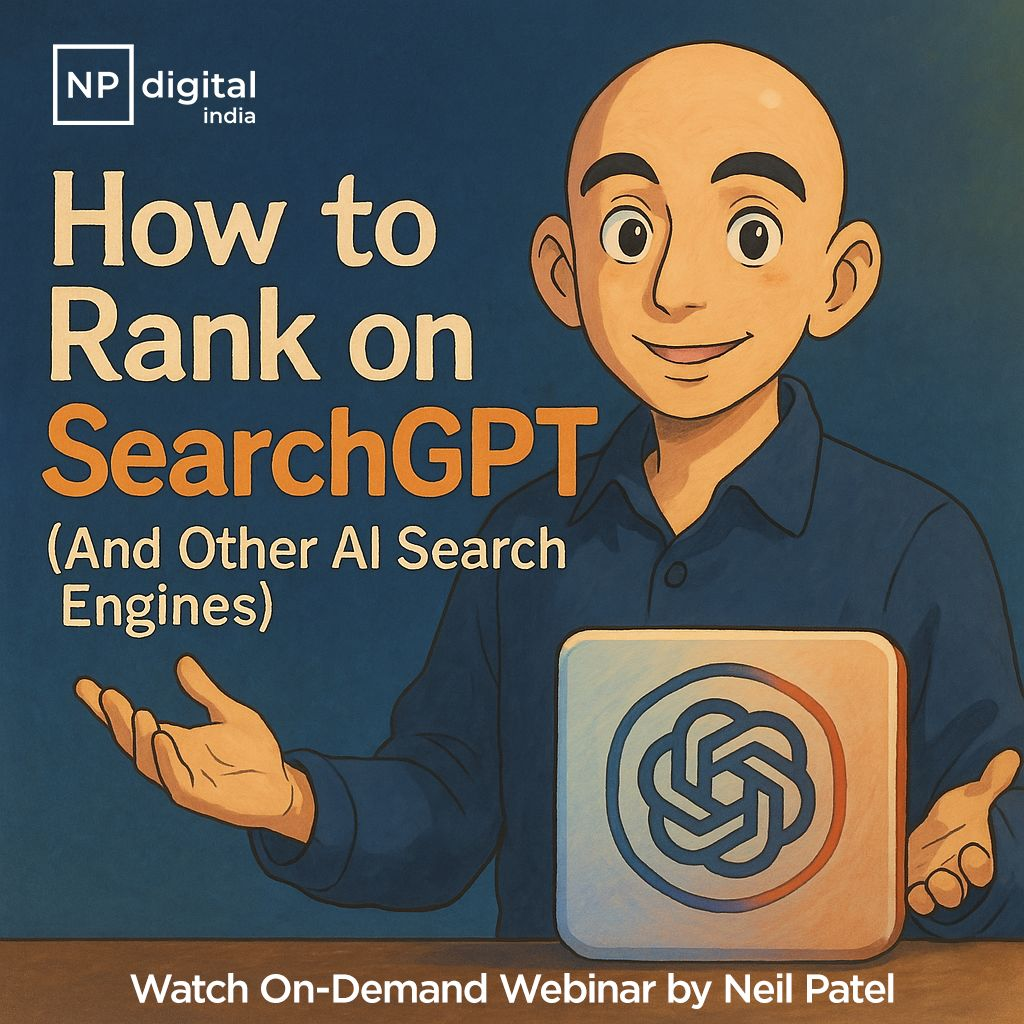
Compare my ad to this example from Forrester. The target audience here is likely tech executives and business leaders at large enterprise companies (especially those in the Fortune 500) who use research in their day-to-day work.

Benefits of Identifying Your Target Audience: Why It Really Matters
Without identifying your target audience, it’s almost impossible to run effective ad and marketing campaigns.
Understanding who you’re trying to reach at a nuanced level gives you much more than basic parameters for setting up Instagram or LinkedIn ads. It’s the basis for crafting laser-sharp messages, picking best-fit channels, and generating valuable brand buzz.
Here’s a rundown of the top benefits of identifying your target audience:
- Segmentation: Finding your various target audiences is really about segmenting your broader target market in a meaningful way. As such, it helps you better understand your customer base as a whole.
- Messaging: When you know what matters to your prospective customers, you can align your ad and marketing messaging accordingly. You can match their values, interests, budget, and even their sense of humor (don’t underestimate this one).
- Channel prioritization: After you’ve identified who you’re targeting, you can find out where they hang out. These content channels, whether TikTok or traditional print media, are the means through which you’ll reach them.
- Return on investment (ROI) and ad spend (ROAS): It’s much easier to calculate the purchase ability and willingness, and therefore the expected ROI and ROAS, of a well-defined group. You can also run early-stage tests to gauge the viability of a campaign.
- Brand awareness: Prospects are much more likely to share ads and content pieces that resonate, entertain, and help. Stand-out campaigns often receive media coverage.
Are You Using Google Ads?Try Our FREE Ads Grader!
Stop wasting money and unlock the hidden potential of your advertising.
- Discover the power of intentional advertising.
- Reach your ideal target audience.
- Maximize ad spend efficiency.
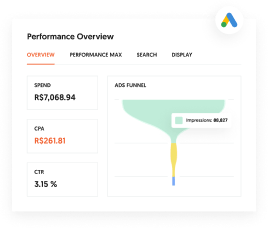
Get your free Analysis
A good example that demonstrates all these benefits is Burger King’s controversial “Bundles of Joy” ad campaign.

A lot of people didn’t like it, but new moms all over the world (the target audience in this case) said it resonated. Many instantly recognized the post-childbirth hunger it depicted and felt seen.
By clearly identifying its target audience prior to launching the ads, Burger King gained valuable insights into its broader market, perfectly aligned its messaging, prioritized the right channels (social media and billboards), almost certainly drove a positive ROI given the wide exposure, and generated lots of brand awareness.
How to Find Your Target Audience: 6 Steps
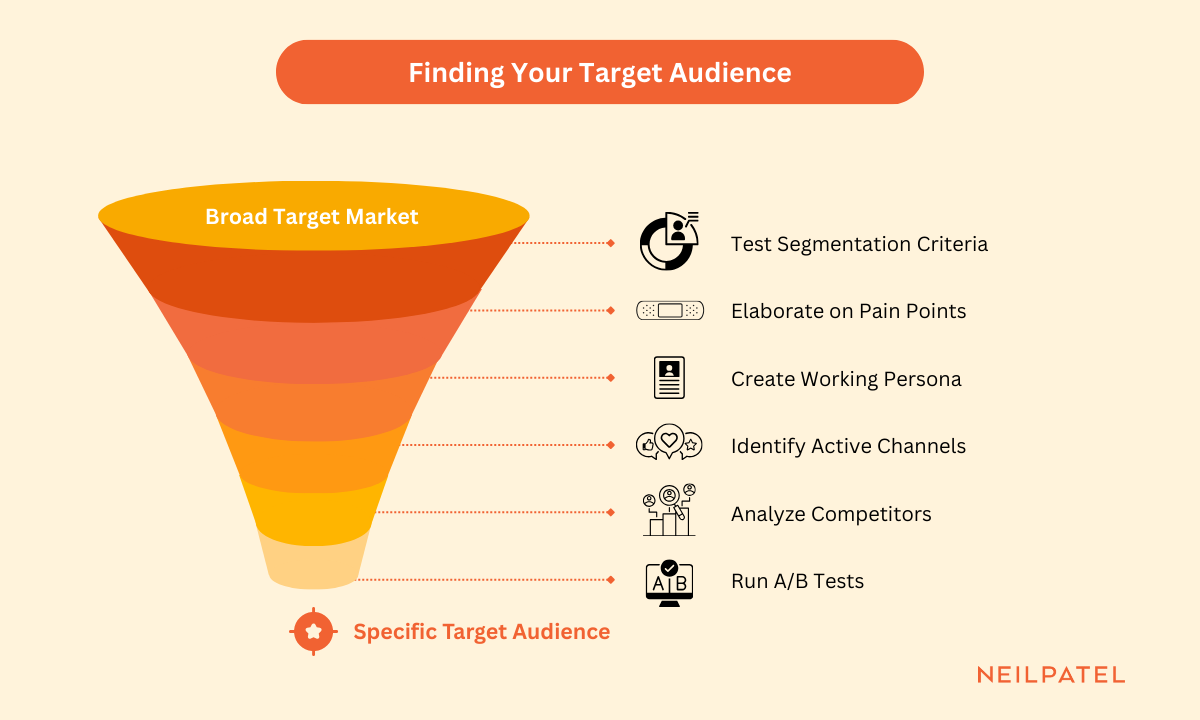
Finding your target audience is about answering a two-pronged question about your customers.
Who are they, and where are they?
It involves segmenting your target market, building out a picture of their characteristics, and testing your conclusions.
1. Test Segmentation Criteria
Your target market is made up of a number of separate target audiences. This stage is about applying different criteria to your overall target market to see which are viable.
You can access and filter relevant data in your CRM, Google Analytics account, or, if you’re starting out, through competitor research with third-party tools like Similarweb.
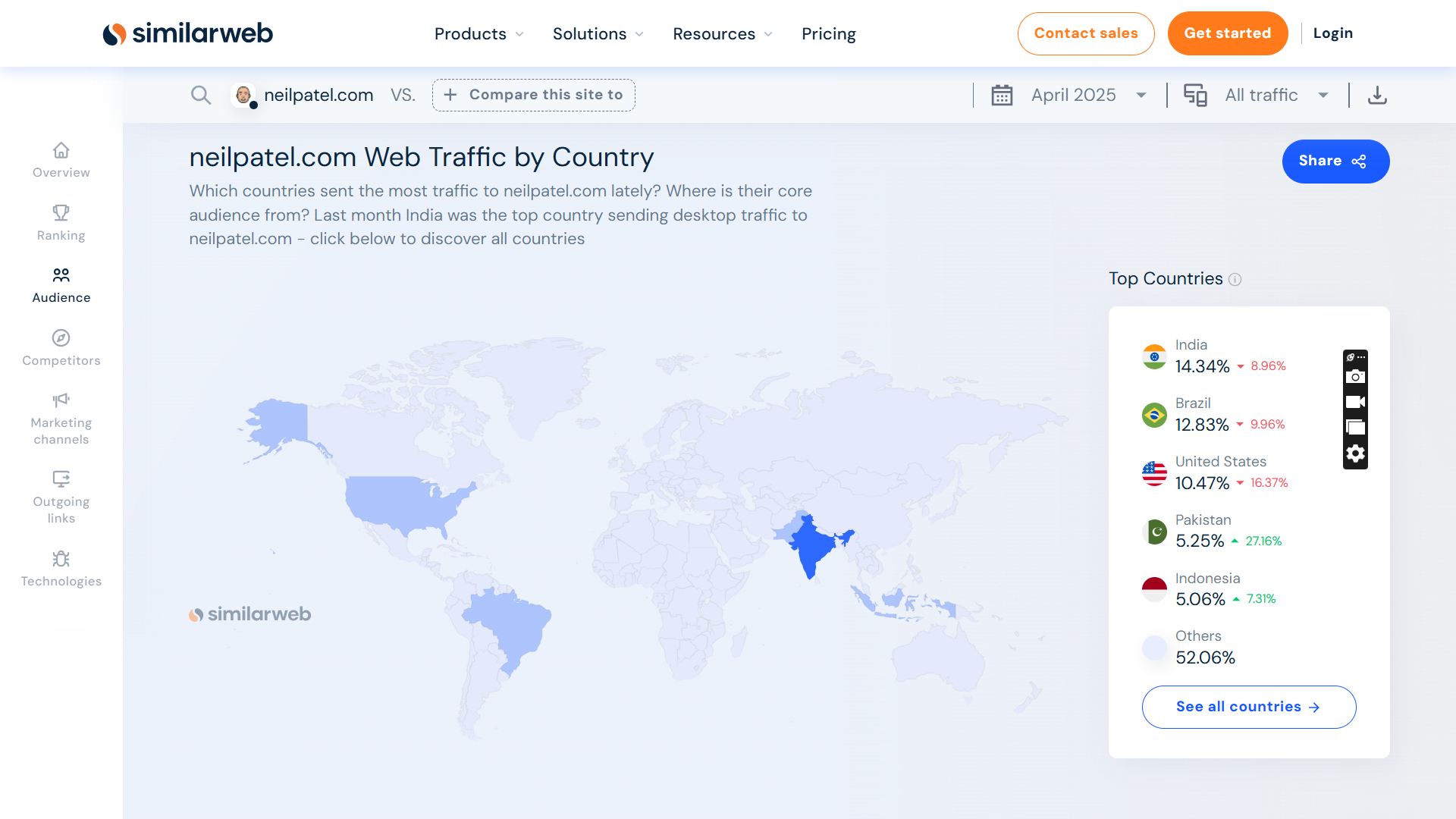
Not all segmentation criteria will work for you. For example, categorizing by country if you have a global market is usually a good idea. Splitting your market by age and gender when you cater to newly retired women is a certain path to a dead end.
There are five high-level parameters by which you can segment your target market:
- Demographic: Age, generation, gender, income, and education
- Geographic: Country, region, and city
- Psychographic: Lifestyle choices, hobbies, and values
- Firmographic (B2B): Industry, company size, and revenue
- Funnel stage: Awareness, consideration, decision, or existing customer
Apply each of these to your target market data to determine which produce distinct and sizable subsections. These are your target audiences and the ideal recipients of your future marketing and ad campaigns.
2. Elaborate on Segment Pain Points
Once you’ve identified the segments that make up your market, it’s time to really dig into the details.
Attributes like values, online habits, and job titles are important. But the pain points experienced by members of your target audience are by far the most valuable characteristics from a targeting standpoint.
Ask the following questions to identify pain points:
- What is the biggest challenge they face that you solve?
- Which tasks aimed at solving this problem consume most of their time?
- What is their biggest frustration with existing solutions?
- How have they tried and failed to solve this challenge before?
- What outcome would an ideal solution provide?
Don’t answer based on intuition. Responses should be grounded in qualitative data gleaned from research like customer review analysis, questionnaires, and focus groups.
3. Create a Working Persona
When it comes to understanding your target audience, their frustrations, pains, and difficulties are what matter most. But well-rounded marketing campaigns incorporate a host of secondary details.
Fundamentally, a persona is a tool for guiding messaging. It gives you a granular understanding of potential customers that informs everything from ad headlines to cold calling scripts.
Research the following details to create a detailed audience persona:
- Job title
- Goals
- Values
- Favorite social media platforms
- Daily routine
- Shopping habits (online, in-store,
- Mobile vs. desktop preference
- Language they use
Remember this is a working composite that you will test later. It is an imaginary individual that brings together your target audience’s most prominent features.
4. Identify Your Target Audience’s Most Active Channels
Once you’ve defined your market segments and built up a comprehensive picture of what those segments look like, you need to find out where they’re congregating.
Take your primary segment parameter, such as age, location, or gender, and look for research into platform preferences. Your own in-house data tools, like traffic sources in Google Analytics, are useful here.
In addition, third-party providers can be valuable sources of insights. Statista, Pew Research, and Gartner are all good options.
For example, my team found that TikTok is by far the preferred social media channel among Gen Z and millennials.

5. Look at Competitors
At this stage, you’re likely itching to launch a campaign. You have a clear understanding of your target audience, and you know where to find them.
But before you dive headfirst into ad and content creation, make a list of your closest competitors and see what they’re doing. You might be surprised at some of the details you’ve missed.
Here’s my simple strategy for spying on your competitors:
- Make a list of your top five competitors.
- Head over to the Meta Ad Library and search for the top one.
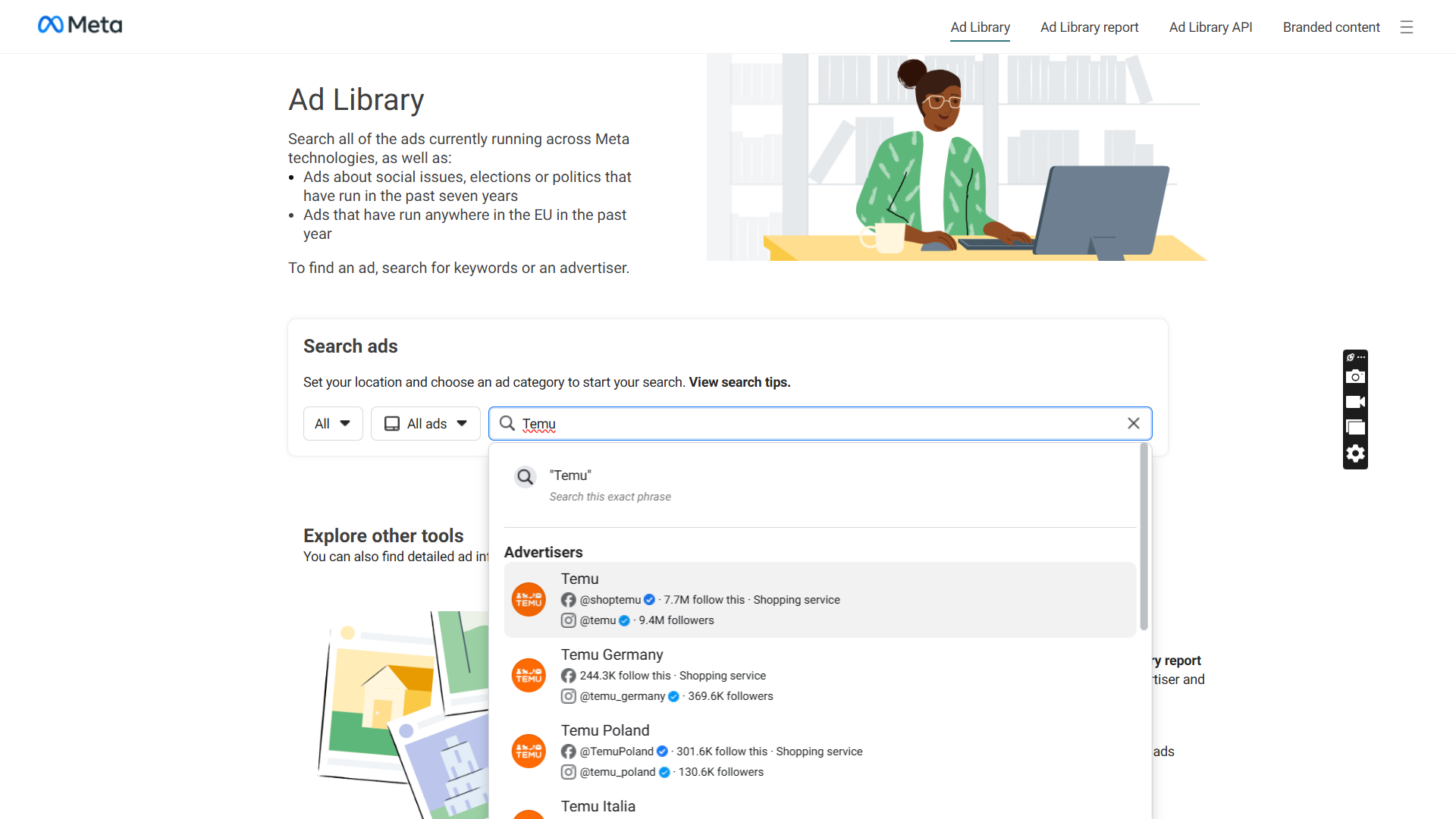
- Find ads that look relevant to your target audience.
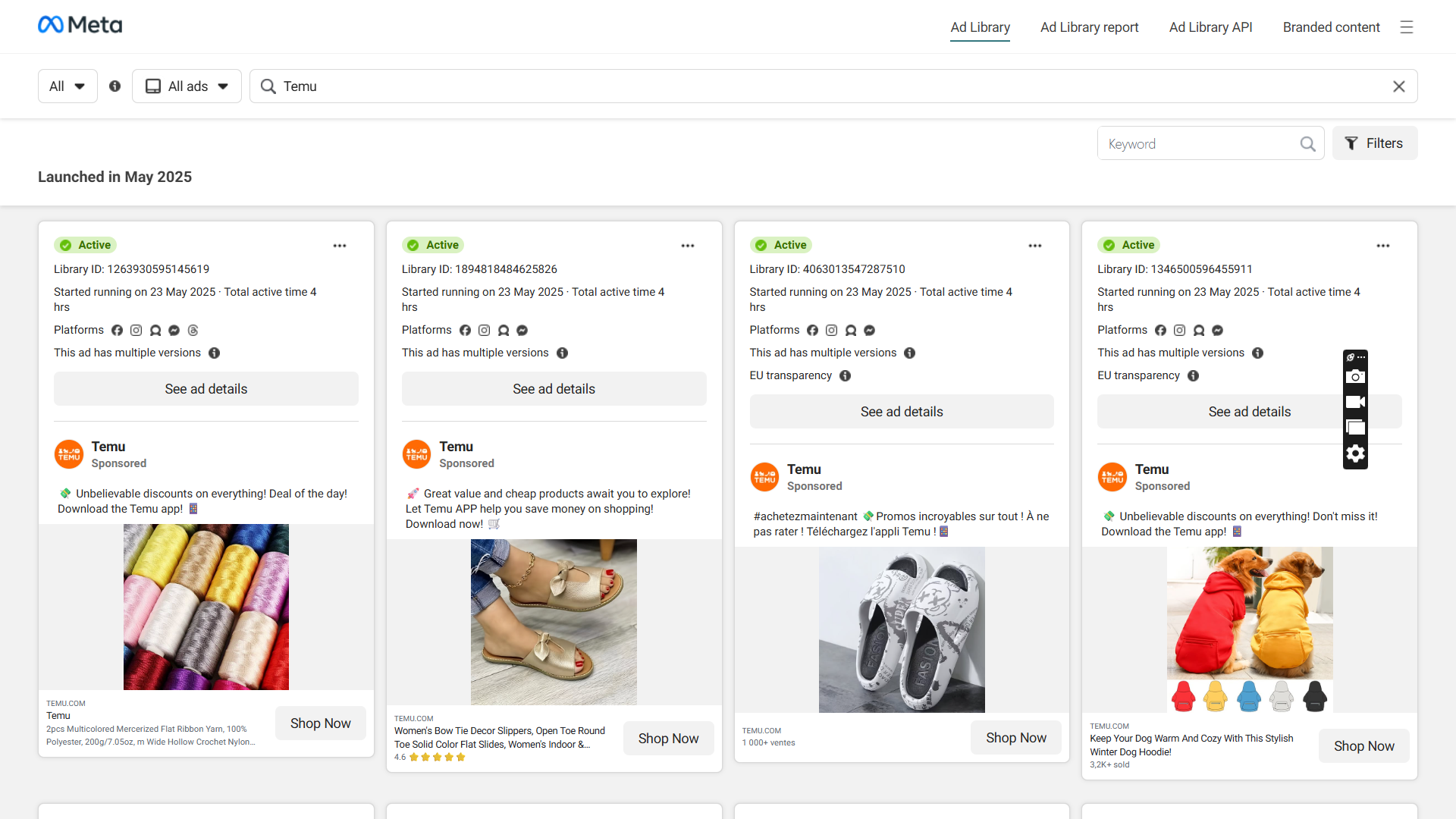
- Click See ad details and take note of any standout language, graphical, and CTA elements that the ad uses.

- Rinse and repeat.
- Run Preliminary A/B Tests
Understanding your target audience is an ongoing task. A/B testing helps you refine your conclusions, correct errors in your customer personas, and even identify new subsections of your defined target audiences.
A/B test the following elements in your marketing and ad campaigns:
- Headlines
- Images
- Calls to action (CTAs)
- Language used in ad copy
- Channels
- Audience sub-segments (like locations within a country and smaller age groups)
Here are two examples of Microsoft Copilot ads that target the same audience but with distinctly different messages. The results will be a valuable source of information about the characteristics of this particular group.
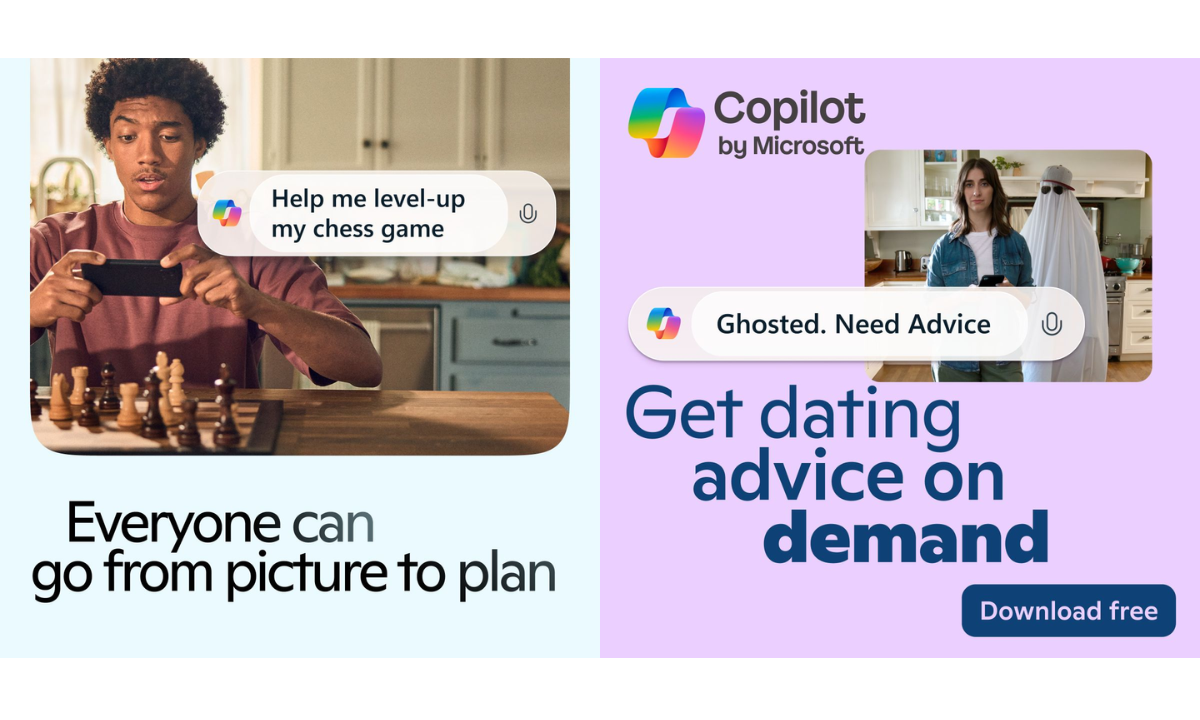
Examples of Target Audiences
Target audiences are specific strands of your larger target market, and understanding this context helps clarify unique attributes.
My target market, for example, is small to medium businesses, marketing professionals, and entrepreneurs.
However, a specific target audience might be small ecommerce startups based in Brazil who are struggling with SEO.
Here are some specific examples of target audiences.
- Funnel-stage target audience: Audiences defined by the stage at which they sit in your sales funnel.
Example: Potential customers in North America who have had one sales call and are actively considering a purchase.
- Demographic and psychographic target audience: Audiences that share traditional demographic data, like age, income, gender, or location.
Example: 25-year-old professional men that live in New York and have an income of between $50,000 and $75,000.
- Hobby/skill target audience: A segment of your target market that shares a particular hobby or skill that is not shared by other segments.
Example: Digital marketing professionals that are also amateur coders and understand programming languages.
What Are the Best Ways of Reaching Your Target Audience?
Reaching your target audience requires a holistic approach. While certain channels will outperform others, customer journeys have grown increasingly messy and now include multiple touchpoints.
Here are the main points to keep in mind when building your campaigns:
- Take an omnichannel approach: Research by my team shows that the average customer journey now contains 11.1 touchpoints.
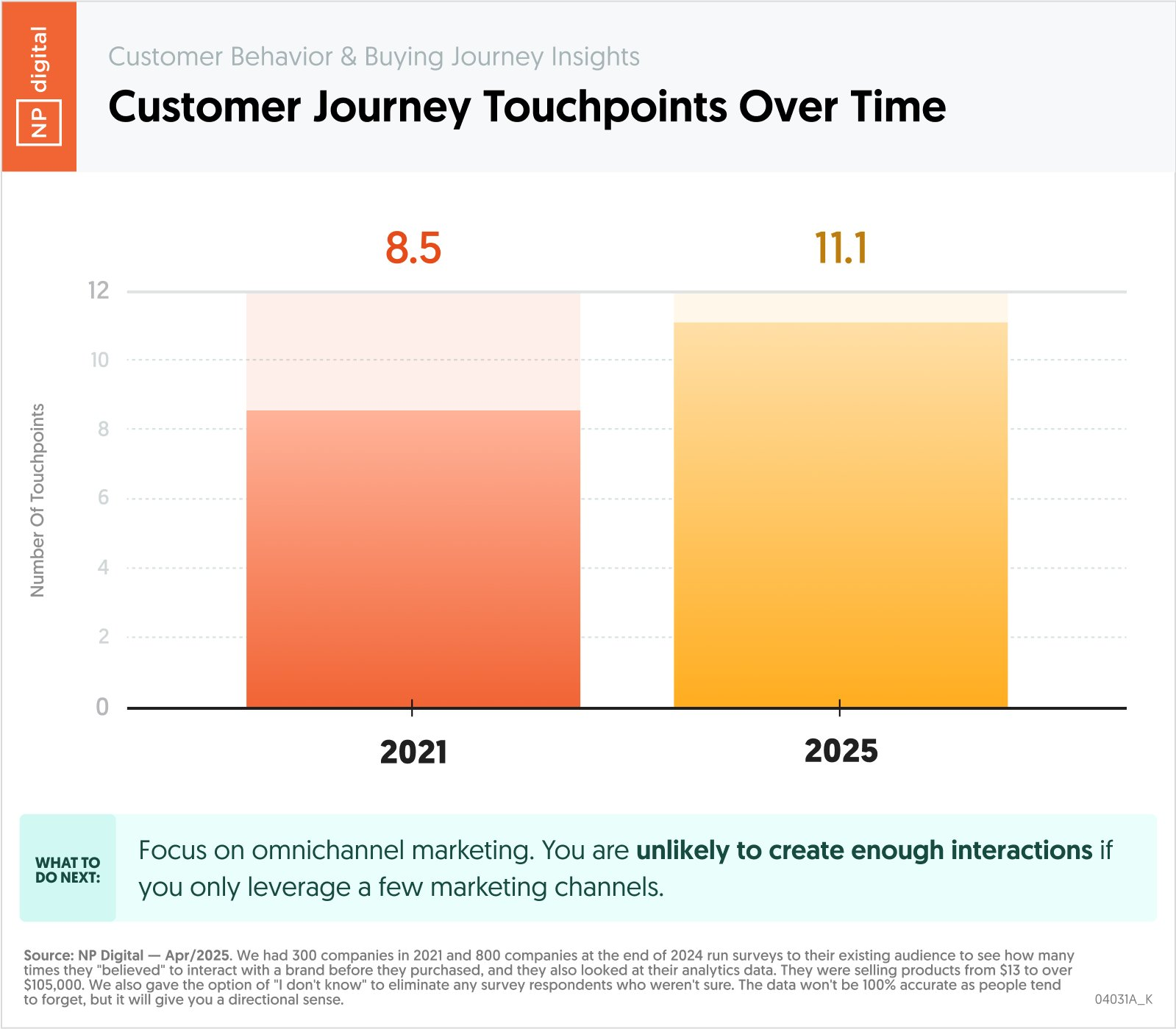
- Tailor content to the nuances of channels: Different channels have different norms and quirks that can be quite specific. Spend time getting to know them.
- Account for the whole sales funnel: Create targeted content for the different stages of awareness, consideration, and decision-making. Our research, for example, found that podcasts perform well early in the funnel, and case studies are important during the decision phase.
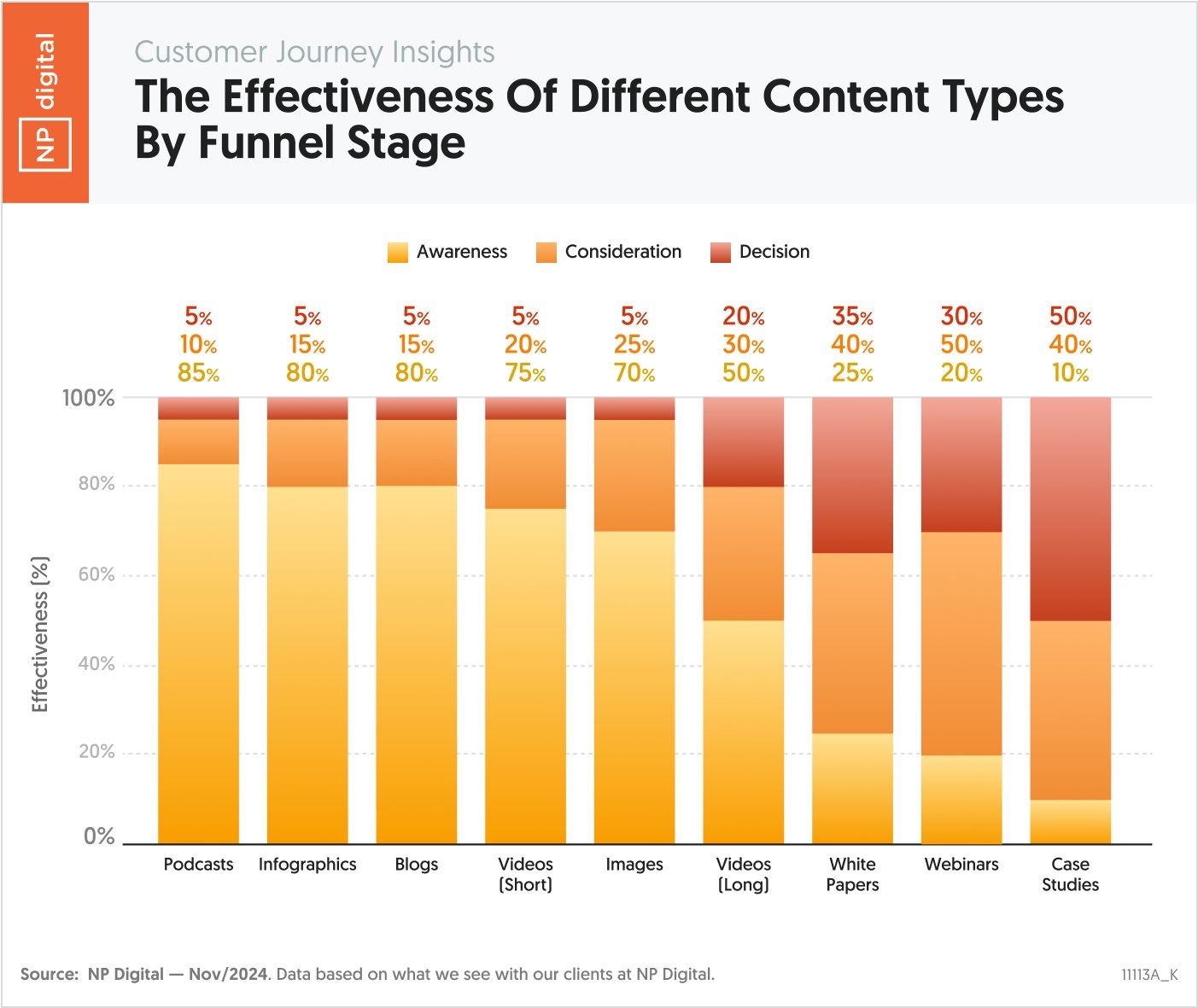
- Test everything and pivot often: Testing is key to honing in on what makes your audience tick. Run A/B and multivariate tests and implement changes as soon as you see meaningful results.
- Gather qualitative data: One of the most underused ways of gathering insights about your target audience is by talking to them (incredible, I know). Once you know who your target audience is, deepen your understanding through direct communication.
Target Audience Research Is a Big Competitive Advantage
Most companies don’t give anywhere near enough attention to target audience research. They adopt a spray ‘n’ pray approach and hope for the best.
If you’re strategic about how you find and reach your target audience, you’ll see more than just a boost to your ad ROI (though you’ll get that, too).
Deeply understanding and connecting with your target audience improves market penetration, brand awareness, and customer loyalty.
Now, time to find those future customers.

